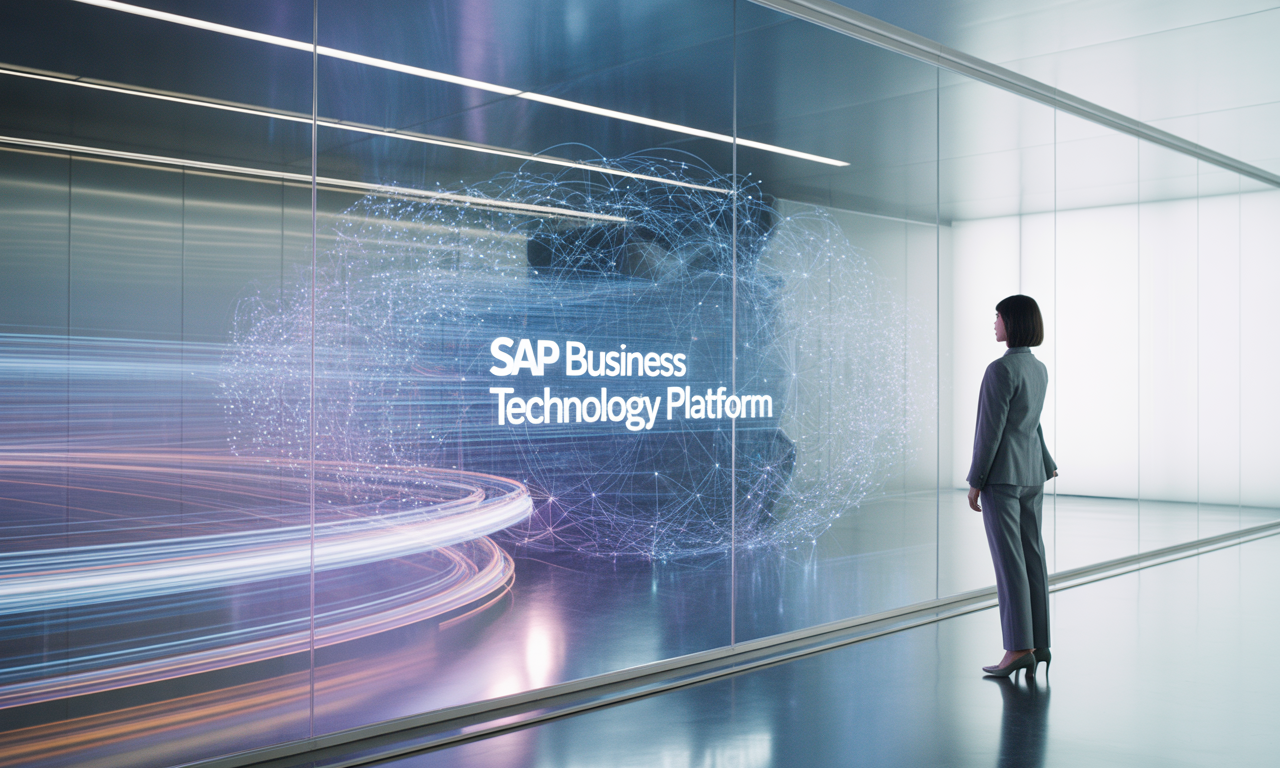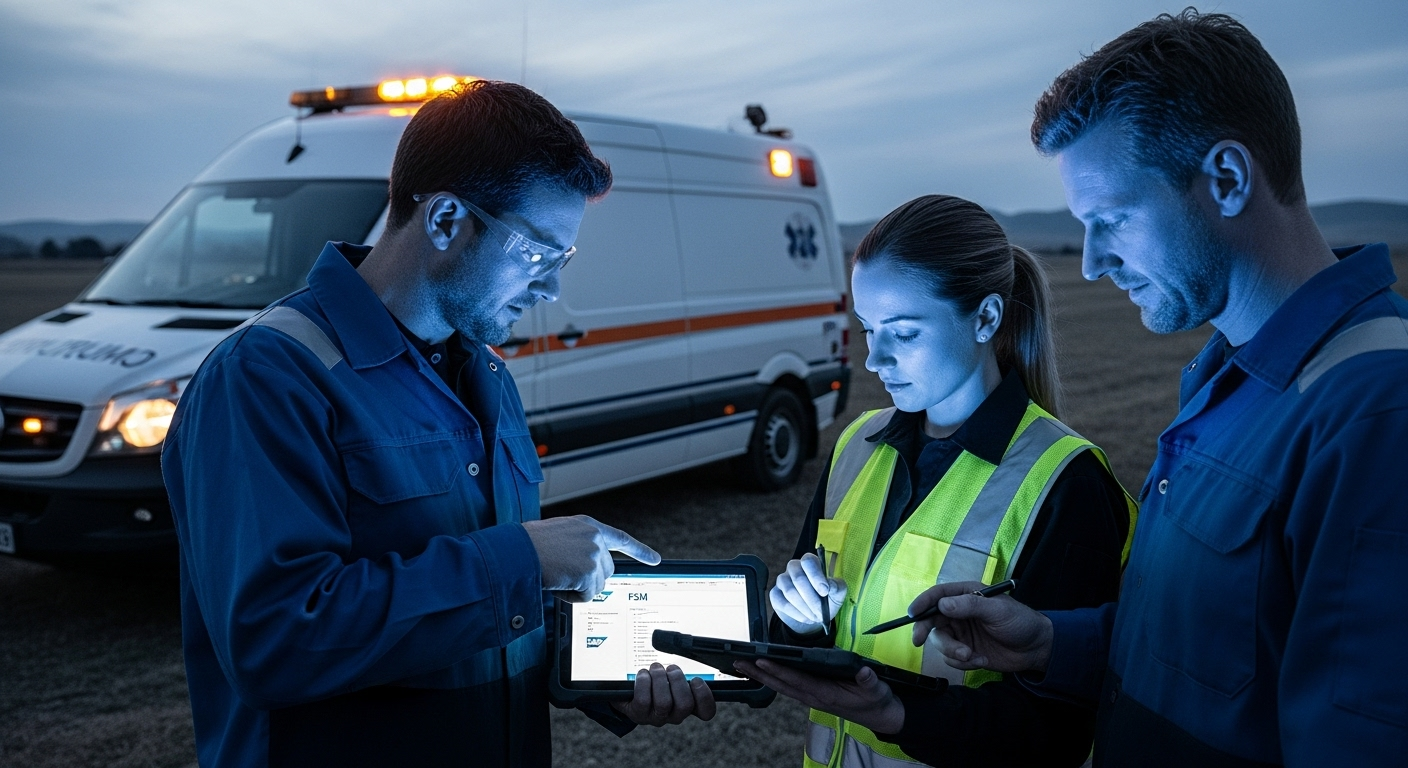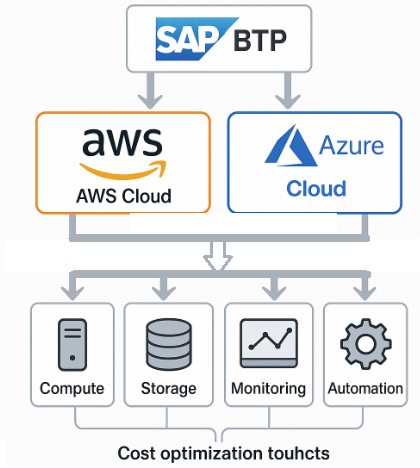The Pre-Pandemic Workplace and the Shift to Remote Work
While remote work was often seen as an unfeasible luxury in a pre-2020 world, the pandemic acted as a powerful catalyst, compelling businesses worldwide to rethink their traditional work models overnight. What once seemed impossible quickly became a necessity, proving that adaptability and innovation could transform challenges into opportunities.
The groundwork for this rapid shift had, however, been laid for years. Key trends were already converging to make a move away from the traditional office model inevitable. Businesses were grappling with increased market volatility and competition, with the slow, sequential waterfall model proving ineffective in a landscape that demanded rapid response to evolving client needs.
As companies expanded globally, teams became more geographically dispersed, exposing the limitations of co-located work. At the same time, there was growing pressure to shorten time to market, as customers demanded value delivered quickly and in short, iterative cycles. Ultimately, the pandemic didn’t create the need for remote work; it simply revealed how ready the business world was for a more agile and flexible approach.
Even before 2020, changing workplace preferences and technological advances had already started paving the way for remote work. The pandemic dramatically accelerated this trend. Several key factors drove the shift:
- Lockdowns and Health Concerns: Government-mandated lockdowns forced organisations to transition to remote work almost overnight. The risk of infection also made many employees and employers hesitant to return to traditional offices.
- Proven Feasibility: Businesses quickly realised that many roles could be performed remotely without compromising productivity or efficiency.
- Digital Innovation: Tools such as Microsoft Teams, Zoom, and cloud-based platforms enabled seamless collaboration. The crisis spurred further investment in these technologies, making remote work more sustainable.
- Access to Global Talent: With geographic barriers removed, companies could hire top talent from anywhere in the world.
- Cost Efficiency: Remote work reduced overheads and commuting costs, offering financial benefits for both employers and employees.
- Environmental Impact: Less commuting meant lower carbon emissions, aligning with broader sustainability goals.
- Improved Quality of Life: In major cities, employees often spend hours in traffic. Remote work reduced this strain, enhancing well-being.
These developments led to widespread acceptance of remote work. However, to make it truly effective, organisations needed to move beyond rigid methodologies like waterfall and adopt more adaptable frameworks – and that’s where Agile proved invaluable.
A Brief History of Agile
Although Agile was introduced in 2001, its adoption in the IT industry accelerated in the years leading up to the pandemic. The shift to remote work created ideal conditions for Agile practices to flourish.
To understand why Agile aligns so well with remote work, it’s worth exploring its origins, core principles, and the impact it has had across industries.
In 2001, a group of software developers, frustrated by the limitations of the waterfall model, gathered at a ski lodge in Utah. Instead of continuing with rigid, sequential processes, they outlined a new way of working – one that prioritised adaptability, collaboration, and customer value. The result was the Agile Manifesto, a clear set of values and principles that reshaped project management beyond software development.
The Agile Manifesto – Four Core Values
- Individuals and interactions over processes and tools
- Working software over comprehensive documentation
- Customer collaboration over contract negotiation
- Responding to change over following a plan
These principles shifted the focus from static planning to dynamic, people-centred delivery – ideal for fast-paced, uncertain environments.
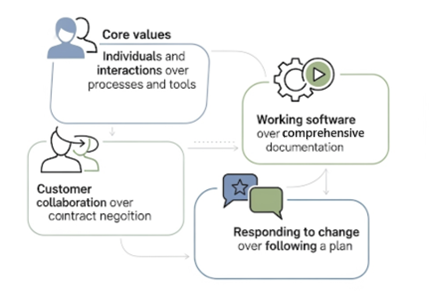
What Defines Agile?
Agile isn’t just a methodology – it’s a mindset. Its key characteristics include:
- Iteration and Incrementalism: Delivering work in small, manageable increments
- Collaboration and Communication: Promoting frequent, open dialogue among team members and stakeholders
- Flexibility and Adaptability: Quickly responding to change
- Customer Focus: Prioritising user needs and continuous feedback
- Self-Organising Teams: Empowering teams to take ownership of their work.
Agile Frameworks and Practices
Several frameworks incorporate Agile concepts, each with its own strengths:
- Scrum: The most widely used methodology for managing projects, based on short sprints (usually 2–4 weeks), daily stand-up meetings, sprint reviews, and retrospectives.
- Kanban: Visualises workflow and limits work in progress to improve productivity and reduce bottlenecks.
- Extreme Programming (XP): Focuses on technical practices such as test-driven development, pair programming, and continuous integration to enhance code quality and reduce risk.
- Lean Software Development: Applies lean manufacturing principles to minimise waste and maximise value.
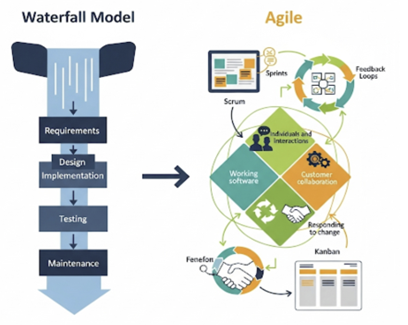
Agile and Remote Work: A Powerful Synergy
Combining Agile methodologies with remote work creates a powerful framework that can enhance productivity, collaboration, and employee satisfaction. Organisations that successfully integrate these approaches are more likely to remain competitive and adaptable in today’s fast-paced environment.
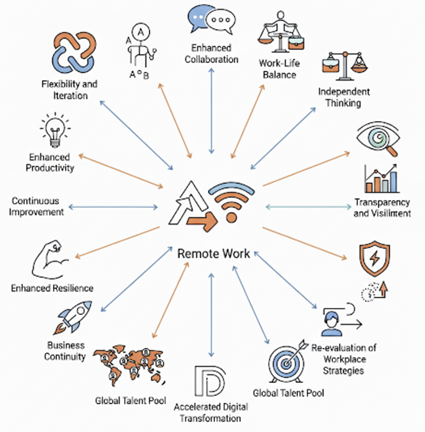
Key benefits include:
- Flexibility and Iteration: Agile’s adaptability helps teams adjust priorities and test new strategies based on feedback. Short sprints make managing remote teams more practical, as focused tasks are easier to coordinate and progress is easier to track.
- Enhanced Collaboration Without Boundaries: Agile practices such as daily stand-ups and sprint reviews help teams stay connected and aligned, even while geographically dispersed. Agile does not rely on constant real-time communication – asynchronous tools allow effective participation across time zones. Digital platforms like Slack, Google Meet, and Asana support this model well.
- Work-Life Balance: Agile’s emphasis on time-boxing and prioritisation supports flexible schedules, contributing to better work-life balance and increased job satisfaction. Remote work also reduces commuting, which helps lower the carbon footprint.
- Independent Thinking: Agile fosters ownership and self-management, empowering remote workers to perform effectively without the need for constant supervision.
- Enhanced Productivity: Studies have shown that remote workers often outperform their office-based counterparts, due to fewer distractions and greater autonomy. Remote work also allows access to a global talent pool, as geography is no longer a barrier.
- Continuous Improvement: Agile teams work in short iterations focused on delivering incremental value. Regular sprint reviews and retrospectives provide opportunities for feedback and collaboration, making continuous improvement a natural outcome. This approach of breaking down complex work into smaller tasks is particularly well-suited to remote teams.
- Transparency and Visibility: Agile tools and techniques such as Kanban boards and burndown charts provide clear visibility into project progress, helping distributed teams stay informed and aligned.
- Business Continuity: Agile and remote working together enabled organisations to maintain operations during lockdowns and restrictions. Virtual collaboration allowed teams to continue working with minimal disruption.
- Enhanced Resilience: The iterative nature of Agile and the flexibility of remote work enabled teams to adapt to uncertainty and respond quickly to change.
- Accelerated Digital Transformation: The combined adoption of Agile and remote work prompted significant investment in collaboration tools and cloud-based infrastructure, driving broader digital transformation.
- Re-evaluation of Workplace Strategies: The pandemic encouraged businesses to reassess their working models, resulting in greater acceptance of remote and flexible work arrangements.
Bridging the Distance – Agile and Remote Work
Every new way of working brings both opportunities and challenges. The goal is to reduce risks as much as possible while minimising their impact.
- Time Zone Differences: Encourage asynchronous communication and flexible working hours. Tools like Trello and Slack help teams stay aligned despite differing time zones.
- Communication Barriers: Promote transparency through daily stand-ups and open discussions. Written communication can sometimes lack nuance, increasing the risk of misunderstandings. Building rapport and fostering a culture of trust requires intentional effort.
- Team Cohesion: Maintaining team spirit is more difficult when members are geographically dispersed. Virtual team-building activities, shout-outs, and regular recognition help strengthen morale and connection.
- Leadership Style: Leaders must adapt to support remote Agile teams effectively. Servant leadership, which emphasises facilitation and trust, is key. Clear communication protocols and conflict resolution strategies are essential, especially when working remotely.
- Onboarding and Training: Introducing new team members and delivering effective training is more challenging in a remote setting. Structured onboarding and accessible support resources can ease the transition.
- Fatigue and Confinement: Remote work can lead to fatigue and feelings of isolation. Managers should remain mindful of employee well-being and provide support.
- Cultural Diversity: Global teams bring cultural differences that can impact communication. Training in cultural awareness and inclusive practices supports better collaboration and understanding.
Best Practices for Agile Remote Teams
- Set Clear Objectives: Define key performance indicators (KPIs) and review progress regularly to ensure alignment and accountability.
- Empower Teams: Trust team members to manage tasks independently, make decisions, and take ownership of their outcomes.
- Embrace Change: Maintain a flexible mindset and be open to experimentation and continuous improvement.
- Promote Well-being: Encourage regular breaks, support flexible working hours, and take active steps to prevent burnout.
- Leverage Technology: Invest in reliable collaboration tools and ensure robust cybersecurity to support remote operations and communication.
The Agile-Remote Revolution: A Blueprint for the Future
The synergy between Agile and remote work has proven to be a powerful and resilient model – offering unmatched flexibility, access to global talent, and robust business continuity. However, this future-focused approach is not one-size-fits-all, and its success depends on how effectively organisations navigate its complexities.
For many, the most practical solution is a hybrid model that blends the efficiency of remote work with the in-person collaboration needed for specific tasks. As technology continues to evolve, virtual collaboration becomes more seamless, with greater emphasis placed on employee well-being and sustainable work-life balance.
By enabling self-organising teams with clear, measurable goals, organisations can foster independent thinking, reduce the need for micromanagement, and maintain transparency. The result is greater resilience and adaptability in the face of disruption.
That said, this shift presents new challenges. Without a physical office, maintaining company culture requires deliberate, consistent effort. The same flexibility that supports work-life balance can also lead to overwork if boundaries are unclear. Additionally, remote work brings new cybersecurity risks that must be proactively managed.
Crucially, not all roles or industries are suited to fully remote models. Sectors such as manufacturing, healthcare, and logistics rely on physical presence. For these, a balanced hybrid approach remains the most realistic path – combining on-site operations with flexible working where appropriate.
Ultimately, organisations that embrace Agile and remote working thoughtfully – with a focus on culture, technology, and feasibility – will be best positioned to adapt, evolve, and lead in the future of work.
At On Device Solutions, we help organisations embrace enterprise digitisation and mobility. Whether you’re modernising your field operations, enabling real-time data access, or streamlining remote collaboration, our solutions are designed to support your Agile transformation journey.
Get in touch here to explore how we can support your move towards a more flexible, digital enterprise.


